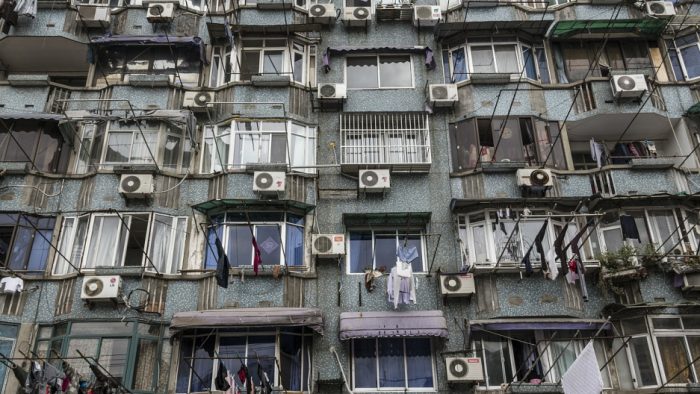Global temperatures are on the rise, and so is people’s demand for cooling. A new study attempts to map India’s cooling trajectory in order to direct policymakers towards more sustainable ways to undertake this transition.
In its quest to understand the dynamics of India’s rapidly changing cooling patterns, a recent study, published in the journal Environmental Research Letters, attempted to answer the what, why and when of users’ buying patterns. The study also observed how the cooling demand is being managed, what strategies are currently being used, and what is the popularity of energy-efficient air-conditioners (ACs).
Cooling in the Capital
In order to get an insight into nationwide cooling trends, the study chose India’s Capital, New Delhi, as a case study, primarily because the region is the country’s highest electricity consumer. Research focused on all current data along with the latest door-to-door surveys in areas of the Capital with above-average AC use and a 50-50 split in AC and non-AC households.
Cooling appliances in these households were divided into three categories – fans, coolers and ACs. The study found that approximately almost all households (99.2%) owned fans, followed by coolers (49.5%) and ACs (43.3%). While many households owned a combination of fans and coolers (39%), a lower percentage owned fans and ACs (33%), and only 11% owned a combination of all three devices.
Decoding user behaviour
In 2020, the government mandated 24°C as the default temperature setting for all room ACs. The study found almost all of the households adhered to this by setting their AC temperature to between 24° and 26°C, while 27% of the households set it between 21°C and 23°C. The data, therefore, unearthed a significant 5°C variation in the cooling preferences of different households.
The study found 60% of households used the AC for an average of 3-6 hours daily during peak summer. This trend was seen even in the wealthiest households, of which only 15% used their ACs for more than 8 hours a day.
On an average, the study found households used their ACs for 5.4 hours daily, which is much lower than the cooling demand of 8-hours a day for six months of the year estimated by the India Cooling Action Plan. The study found most users switched on their ACs and coolers between 10pm and 1am, which suggests these devices were most commonly used for sleep.
Cool customers
The study delved further into user behaviour to understand how living conditions also played a part in energy usage. It found those living on the ground floor had 35% higher usage, while those living in apartments or flats, as opposed to a house, had 1.1-hour less usage on average. Those with poor power supply also used their ACs 0.9 hours less on average.
Monthly incomes also determine AC usage, the study found. Households with higher incomes used their ACs more, while those owning second-hand ACs were more mindful of their use. Households with senior citizens were also found to use their ACs less. Awareness of energy-efficiency also translated into lower AC use, according to the study. “For example, those who are aware of the subsidised LED lighting bulbs scheme, own energy efficient fans and know the per-unit cost of electricity are predicted to have fewer hours of AC usage,” says Dr Radhika Khosla, the lead author of the study.
It’s all in the stars
The hefty price and frugal supply of the more efficient 4-star and 5-star energy efficiency rating ACs have made the 3-star rating ACs most popular among these households, the study revealed. Approximately 36.8% of households were fitted with 3-star ACs compared to the 19.8% with 5-star ACs and 9.9% with 4-star ACs.
Those who opted for the most expensive 4-star and 5-star ACs made their decisions based on environmental consciousness and bill savings, the study found.
Dissecting gender roles
So who in the household takes the decision to buy an AC? The study took a micro-level peek into these households to find that it is the middle-aged, employed male – the head of the household – who makes the decision, and after them it is their offspring. Women seem to have very little say. The study found this gender disparity was largely a result of lower awareness in women of appliance technology and energy efficiency. “Closing this gap is critical as it can help move India’s cooling transition towards sustainability. We know from research in other geographies and cases that women can often play a much stronger environmental role,” Khosla says.
Greater understanding needed
With India’s urban centres growing rapidly, there is an obvious increase in the purchase of cooling appliances. In order to transition towards a low-carbon cooling future, however, the study pointed towards some factors that need to be accounted for. Chief among these is the scaling up of energy-efficient ACs, coolers and fans at a rate that matches the rise in purchases.
The study also recommended increasing awareness of energy efficiency schemes right down to the retailer level. The more efficient cooling appliances come at a cost and many users choose to pay in instalments. The study suggested the government introduce more innovative financing mechanisms to incentivise users to opt for less energy-guzzling cooling appliances. “Understanding the role of women in cooling energy decisions – as well as targeting and working with men and women differently to develop sustainable cooling pathways – can also be important to changing patterns of cooling consumption,” Khosla says.
About The Author
You may also like
How India is shifting its nuclear power plans into high gear
“Government support needed for large-scale carbon-capture projects in India”
Cost-reflective tariff key to ending Tamil Nadu’s DISCOM woes
Energy crises, geopolitical tensions set stage for explosive climate talks
What Tata Steel’s attempts to decarbonise tell us


